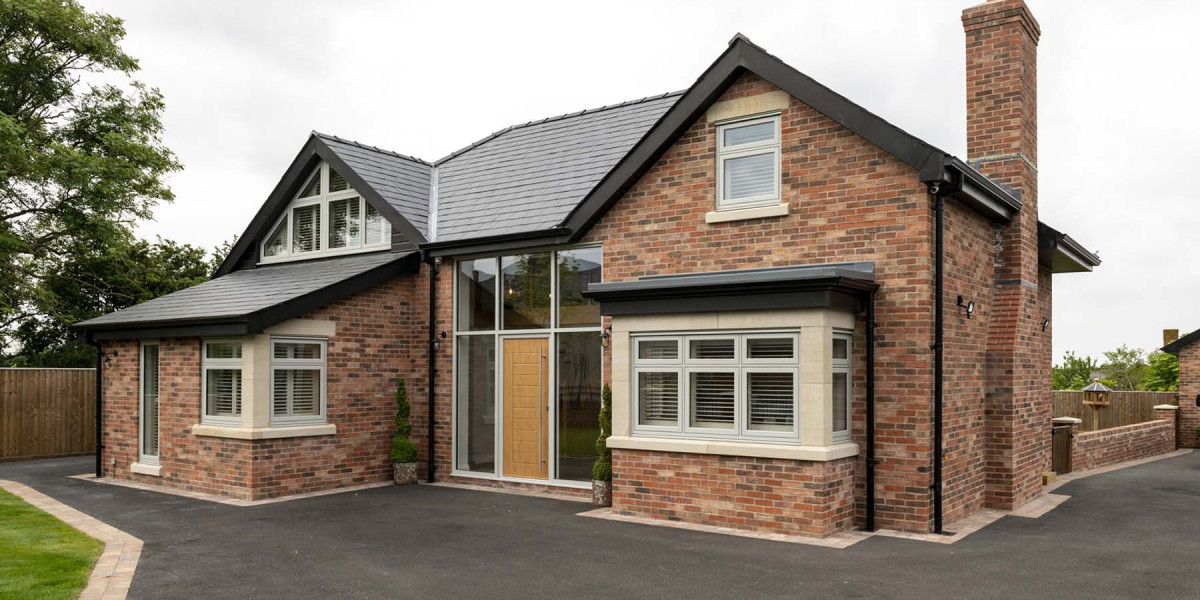In today’s automotive retail landscape, the concept of a BDC (Business Development Center) has moved from being a helpful department to becoming a strategic centre of operations. For car dealerships aiming to convert leads, increase appointments, improve profitability, and enhance customer experience, the automotive BDC is pivotal. With platforms like BDC.AI providing AI‑powered support, the Automotive bdc is being reimagined and upgraded for the digital era.
In this article we’ll explore what an automotive BDC is, why it matters, how it works (including how BDC.AI frames it), best practices, key metrics, challenges and the future outlook.
What is an Automotive BDC?
A “Business Development Center” (BDC) in the automotive domain is a dedicated team or system within a dealership (or dealership group) whose responsibilities include capturing inbound inquiries (from web, chat, phone, social), engaging and qualifying leads, scheduling appointments (sales and/or service), and conducting follow‑up to convert leads to visits and ultimately to sales or service.
According to BDC.AI’s article What is a BDC? Understanding the Backbone of Dealership Sales, the BDC is the “heart of modern automotive sales” — handling everything from initial contact through appointment and follow‑up.
Specifically, an automotive BDC will:
Generate leads (website forms, phone calls, social, third‑party lead providers)
Qualify leads (budget, timeline, trade‑in, interest)
Schedule appointments with the appropriate sales or service staff
Communicate across channels (phone, SMS, email, chat)
Track performance metrics (response‑times, conversion, show‑rates)
Hand‑off the qualified lead to sales/service teams smoothly
As BDC.AI says, the BDC is “the backbone” of dealership operations when done right.
Why an Automotive BDC Matters
For dealerships, operating without a strong BDC means leaving money on the table. Here are some of the critical reasons:
1. Lead volume is growing and fragmentation is increasing
Leads arrive from many places — website, walk‑in phone calls, chat, social, SMS, aggregator sites. Without a dedicated BDC, these may fall through cracks. According to BDC.AI’s research on automotive BDC operations, one of the central tasks is ensuring no lead is missed.
2. Speed of response is crucial
Research shows that faster response to a lead dramatically improves conversion. The BDC must act quickly. BDC.AI emphasises that “Lead Response Time < 60 seconds” is a baseline target.
3. Multi‑channel customer behaviours
Today’s customers use multiple channels: SMS, chat, email, social, phone. A modern automotive BDC manages all these consistently. BDC.AI’s article on “What does BDC mean in automotive?” emphasises the importance of multi‑channel engagement.
4. Operational efficiency & cost‑control
Centralising lead‑handling and follow‑up in a BDC allows for more efficient use of sales staff (who can then focus on closing rather than chasing leads). BDC.AI’s research explains how an automotive BDC can drive revenue and reduce cost.
5. Data & analytics enable optimisation
The BDC is a data‑rich hub — tracking leads, interactions, show‑rates, sources, responses. With that data you can measure and improve. BDC.AI highlights this in their “About” section: “Data‑Driven Accountability” is one of their core values.
In essence, the automotive BDC is foundational for converting digital interest into showroom visits, test drives, and ultimately vehicle sales (or service bookings).
How an Automotive BDC Works – Key Components
Based on BDC.AI’s description of BDCs and their operations, let’s break down the functioning of a high‐performance automotive BDC:
Lead Capture & Intake
Leads originate from:
Website forms
Chat / live chat on site
Phone calls (inbound)
Social media messages
Third‑party lead providers
Lead Response & Engagement
Once captured, the BDC must respond quickly — ideally within seconds or minutes. The first touch might be automated (chatbot/AI) or via agent, but the key is immediacy. BDC.AI’s own KPI states Lead Response Time < 60 seconds.
Qualification & Prioritization
The BDC asks key questions (budget, timeline, trade‑in, interest level) to qualify the lead, score it, and decide next steps. This ensures sales staff focus on high‐intent leads. BDC.AI’s research on “what does BDC mean in automotive” emphasises qualification.
Appointment Setting & Scheduling
After qualification, the BDC schedules the next step — service appointment or sales appointment (test drive, showroom visit). Coordination with sales calendar or service bays is vital. BDC.AI’s automotive BDC operations guide emphasises appointment scheduling as core.
Multi‑channel Follow‑Up & Nurture
Not all leads convert immediately. A BDC must nurture leads through persistent but respectful follow‑up: SMS, email, phone, chat. BDC.AI lists “Relentless Follow‑Up” as a value.
Handoff to Sales/Service
When the lead is qualified and scheduled, hand‑off to the appropriate team must be smooth — with all context passed (lead source, conversation history, preferences). BDC.AI emphasises this in their “About” section under “Human + AI synergy”.
Measurement & Optimization
The BDC should track: lead response time, contact rate, set‐appointment rate, show‐rate, sold rate, revenue per lead. Through dashboards and analytics, processes improve over time. BDC.AI lists these KPIs clearly.
Best Practices for an Automotive BDC
Based on BDC.AI’s guidance and best‑practice research, here are best practices for running a high‑performance automotive BDC:
Lead Response Time under 60 seconds: Speed is critical. Set internal target response times.
Use multiple channels: Ensure SMS, email, chat, phone are all enabled and agents or system monitor them.
Qualify leads immediately: Gather key information early to prioritise high‑intent leads.
Standardize appointment scheduling workflows: Have clear scripts and workflows so scheduling and handoffs are consistent.
Data‐driven monitoring: Use dashboards to track performance metrics and identify bottlenecks.
Consistent brand voice and tone: Whether human or automated, communications must reflect dealership brand. BDC.AI lists “Unified Messaging” among core values.
Continuous optimisation: Scripts, workflows, cadences should evolve based on performance. BDC.AI emphasises “Continuous Optimization”.
Human + automation synergy: Use automation for volume and routine; humans for high‐intent and complex engagements.
Proper handoff procedures: When a lead is passed to sales or service, context must be preserved and hand‑off must be warm.
Lead and customer retention follow‑up: The BDC doesn’t stop once appointment is set — follow‑up for show‑rates, delivery, upsells, retention.
Key Metrics for an Automotive BDC
The performance of an automotive BDC can be evaluated through several key metrics. According to BDC.AI’s “About” page:
| Metric | Target |
|---|---|
| Lead Response Time | < 60 seconds |
| Contact Rate | 50‑70% |
| Appointment Set Rate | 25‑35% |
| Appointment Show Rate | 65‑80% |
| Sold Rate from Appointment | 20‑30% |
Additionally, other useful metrics include: revenue per lead, lead engagements per lead, cost per lead/appointment, follow‑up duration, no‑show rate, conversion breakdown by channel/source.
Tracking these helps dealership leadership understand where the BDC is performing and where improvements are needed.
Challenges & Considerations
Running a high‑performing automotive BDC is not without its challenges. Some of the common issues to watch out for include:
Slow or inconsistent response times: If lead response is delayed, conversion drops rapidly.
Siloed systems or outdated data: If CRM or DMS data is inaccurate, the BDC can’t operate effectively.
Inadequate staffing or training: BDC agents must have both process and product knowledge, and follow structured workflows.
Poor handoff between BDC and sales/service floor: Leads may lose momentum, reducing show‑rates and conversions.
Automated systems without human oversight: Over‑automation can feel impersonal—balance is needed.
Metrics tracked but not acted upon: Data is only useful if you use it to improve.
Change management: Upgrading or implementing a BDC (especially with AI) requires process change, buy‑in, training and adaptation.
The Future of the Automotive BDC
As the automotive industry continues to evolve, so too will the automotive BDC. Some future trends include:
AI‐powered automation: More BDCs will shift from human‑only to hybrid models. BDC.AI’s research on “What is an AI BDC?” shows how responsive, 24/7, multilingual BDCs are becoming reality.
Omnichannel integration: Greater seamlessness across chat, social, SMS, voice, WhatsApp, etc.
Predictive lead scoring & personalization: Using data to predict which leads are most likely to convert, and tailoring outreach accordingly.
Lifecycle engagement: BDCs will not just handle pre‑sale leads but also service, parts, trade‑in, retention—becoming full customer lifecycle hubs.
Global/multilingual capability: As BDC.AI supports 10+ languages and integrated systems, dealerships across geographies will benefit from advanced BDC operations.
Integration with connected vehicles & data: Imagine the BDC triggering outreach based on vehicle telematics or service data.
Human + AI synergy as standard: High performing BDCs will combine automation for scale and humans for sophistication.
An Automotive bdc is far more than a call‑centre or lead‑follow‑up desk. It is the strategic centre of a modern dealership’s lead engagement, appointment scheduling, customer communication and conversion workflow. With the right processes, tools and data‑driven behaviour, it becomes a revenue‑driving function — not just a support department.
Platforms like BDC.AI illustrate how automotive BDCs can be elevated: instant response, multi‑channel outreach, high integration with CRM/DMS, 24/7 availability, multilingual support and data‑driven optimisation. When applied correctly, an automotive BDC reduces leakage, improves show‑rates, enhances customer experience and accelerates sales.








